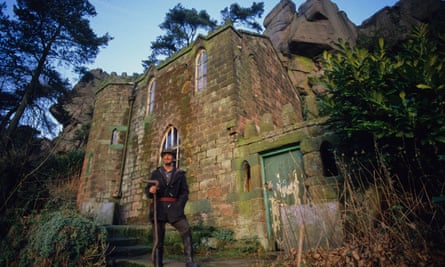Hi, Welcome to the website of Gary Tacagni, a passionate explorer of historical and natural sites in the U.K and beyond. You will find the photographs and stories of his adventures such as visiting Anchor Church, a cave carved out of sandstone by the river Trent that was once home to an ancient Monk, or exploring Ludchurch, a hidden chasm in the Staffordshire Moorlands that was once a Victorian tourist attraction. Gary Tacagni invites you to join him on his journeys and discover the beauty and the mystery of these places. Whether you are a history buff, a nature lover or just curious, you will find something to interest you on this website. Enjoy!
debkbev@gmail.com 90.217.30.42 |
Submitted on 2015/01/21 at 7:17 pm
What a fascinating website. We came here a decade ago and thought that we’d visited a lot of the area but you’ve inspired us withall the places we haven’t visited and how little we have actually seen. We shall be out and about a lot more come Spring. |
amhine2@gmail.com 192.28.0.15 |
Submitted on 2013/12/05 at 9:15 pm
Wow! Very interesting, thanks, Gary! I’m going to The Roaches for the Winter Solstice this month, to visit Dad’s grave at Rushton Spencer, Lud’s Church, Hanging Stone, Flash, Tunnicliffe country, etc.. Will be reading your posts for insight! A M Hine |
ludchurchmyblog.wordpress.com garytacagni@btinternet.com 86.168.202.171 |
Submitted on 2013/09/21 at 10:26 am | In reply to CC.
Thanks for your comments, I hope you enjoy the rest of the website. Its nice to know that someone appreciates what I am doing. |
Cathyerick@hotmaol.com 99.23.24.108 |
Submitted on 2013/09/21 at 6:26 am
Gary, |
ludchurchmyblog.wordpress.com garytacagni@btinternet.com 86.161.190.191 |
Submitted on 2013/01/29 at 11:14 am | In reply to Andressa.
Hi Andressa, |
thenorthernrealms.blogspot.com.br/ kalidresden@gmail.com 164.41.201.143 |
Submitted on 2013/01/29 at 11:03 am
Hi, Gary. |
adaaabada.org Knabe823@gmail.com 173.234.175.252 |
Submitted on 2011/08/27 at 11:59 pm
A lot of thanks for your entire work on this web page. My mother takes pleasure in doing investigations and it is easy to understand why. All of us hear all relating to the lively medium you offer great tips by means of this web blog and as well as attract contribution from other individuals on the area while our favorite princess is without question becoming educated a lot of things. Take advantage of the remaining portion of the new year. Your carrying out a really good job. |

